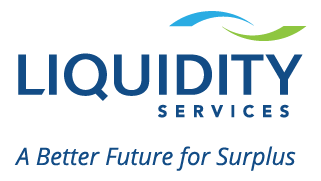Liquidity Services regularly surveys its vast database of secondary market buyers worldwide to gain valuable insights into their needs, priorities, and behaviors. We do this for a number of reasons, but the two most important ones are so that we can continue to improve our buyers’ experience of the Liquidity Services family of online marketplaces, and to offer our findings to organizations like yours who may be looking for ways to improve their reverse supply chains.
Recently we surveyed over 1,600 active registrants, bidders, and buyers on our online marketplaces and analyzed the results with an eye to finding key strategies to help ensure maximum recovery from online and in-person sales. Just as in our 2015 surveys, we found that asset descriptions and pictures are still some of the most popular things buyers look for, but there are a couple new entries as well.
Here are the top three ways we found to help maximize those returns:
1) Include comprehensive asset details in your listings
Detailed, comprehensive information on the assets you are selling is perhaps the most important selling point that you, as a seller, can exert control over. Numerous and clear asset photos, detailed descriptions, asset location, removal requirements, transaction type, videos, even the number of current bidders can all help potential buyers decide to purchase your assets instead of those being sold in another, less detailed listing. Buyers typically know what they want, and if you can prove to them that you have it, you’re halfway to making the deal.
2) Make your assets easy to find online
Of course, all the clarity and disclosure in the world won’t help if buyers can’t find your assets in the first place. Making sure your listings are easy to find and even more easily accessible is a huge factor in whether you get page views. More page views typically means more bidders, which is great news for any seller. Our survey found that nearly 70% of participants come to our online marketplaces through online searches or auction listing websites. That means that actively using SEO, online advertising, and email marketing can attract buyers to your auctions, instead of your competitors. If you’re able to engage these marketing practices from within your own company, do so. If not, we highly recommend finding a partner who can.
Other ways buyers found the assets they were looking for included:
17% from a friend or colleague referral
15% auction listing website
7% online advertisement
7% email
4% social media
3) Surpass competitors with an excellent marketplace
It’s hardly a secret that there are many, many marketplace options for you to choose from when deciding where to list your assets for sale. Keep in mind, however, that when it comes to selling, it’s what the buyer wants that’s most important, and the online marketplace you choose should be built from the ground up with a goal of “Excellence of Experience” in mind. According to our survey results, the top five things buyers look for in a website are:
Overall features and design. The site should be easy to understand with even a cursory glance, with a clear Contact Us and Registration link on every page.
Ease of doing business. The site should have a help page and customer service contact options to assist with complex operations. The listings themselves should be clear, detailed, and well-categorized, with useful search tools to help buyers find what they’re looking for.
Excellent customer service. Interactions with online marketplace representatives should leave the impression that they are knowledgeable, helpful, efficient, and adaptable, with a focus on first call resolution.
Convenient payment processes. Completing the transaction and processing payment should be simple, painless, and able to be completed entirely online.
Asset removal arrangement and assistance. Not only should asset removal terms be listed clearly on the auction page, the online marketplace should also be able to work with both the seller and the buyer to facilitate asset removal.
Put It into Practice
Following these best practices will help buyers choose to buy your surplus over your competitors’, and help generate high recovery for your surplus. But because surplus isn’t a core competency for most businesses, your organization may simply not have the time and resources to effectively execute these strategies. Partnering with an expert provider such as Liquidity Services ensures superior customer experiences for buyers—after all, it’s our data, and we use it to improve ourselves every day!—while freeing up resources to focus on your core business. To learn how an expert partner can benefit your business, contact us.



Comments are closed.